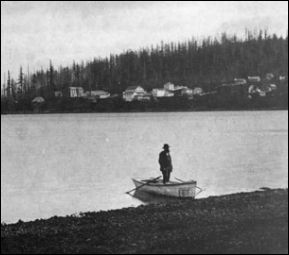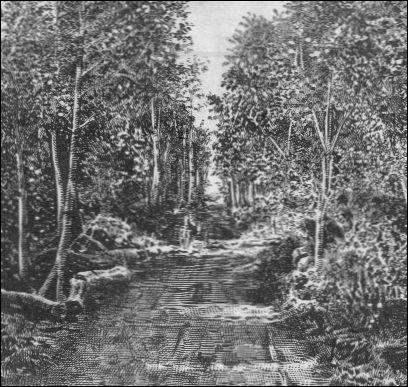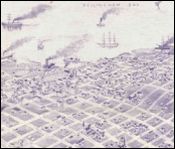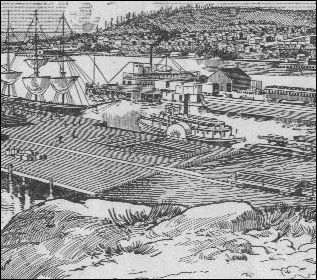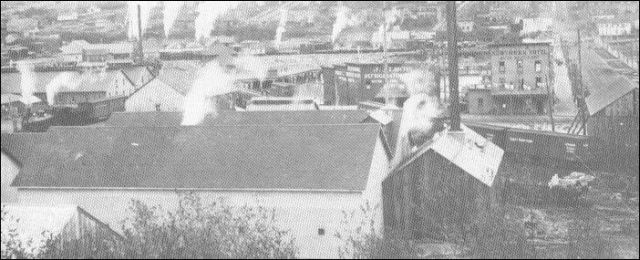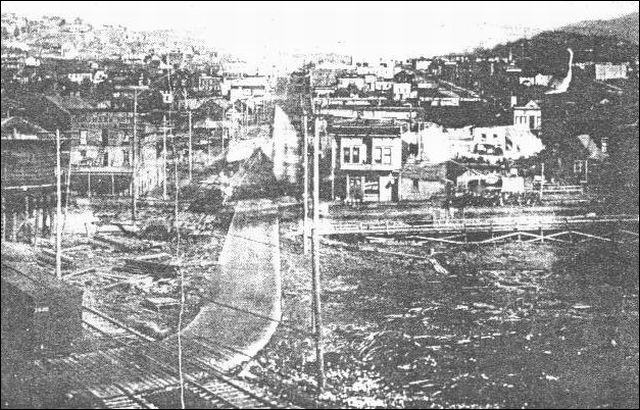This photo and the one below seem to be two parts of a panoramic image, but we have only seen them in these two parts. One is an excellent print; the other is from a Xeroxed copy. We think that both were taken by noted Fairhaven Eric A. Hegg, who was born in Sweden in 1867 and arrived on Bellingham Bay at age 21 in 1888, just in time for the Fairhaven boom. He photographed Bennett and Larrabee's boom years, hung in here during the Depression and then went to the Yukon for the Klondike gold rush in the late 1890s, where he stayed for two decades. He returned to Bellingham and kept a studio here until 1946, when he moved permanently to California.
Update: at least we thought it was Hegg's photo, but then we saw a version with a blurred signature that was not Hegg's. Instead, the photographer was Bert W. Huntoon, whom we profiled extensively in connection with his engineering work on the original Cascade Pass wagon road in 1895. Huntoon was a principal of Pacific American Fisheries, which built on the north side of Dan's hotel, and he then became the "father of Mount Baker Lodge." See Dan Harris's Northern Hotel at the right — with the new sign on the front, advertising $1.25 per day; the edge of the stump behind, from which the famous flagpole protruded, the newly planked Harris Street and industry all around the Bay. In her book, Settlers, Structures & Ships of Bellingham Bay, Roamonde Van Miert explained that the building to the north (left) of the Northern Hotel was Alsop's General Store, with a sign advertising refrigerated meats and eggs. She also noted that 200 Chinese workers were housed in three hotels, the Northern and the nearby St. Louis and the Focal City. Photo copy from the Biery Collection.
|

 810 Central Ave.,
810 Central Ave., 